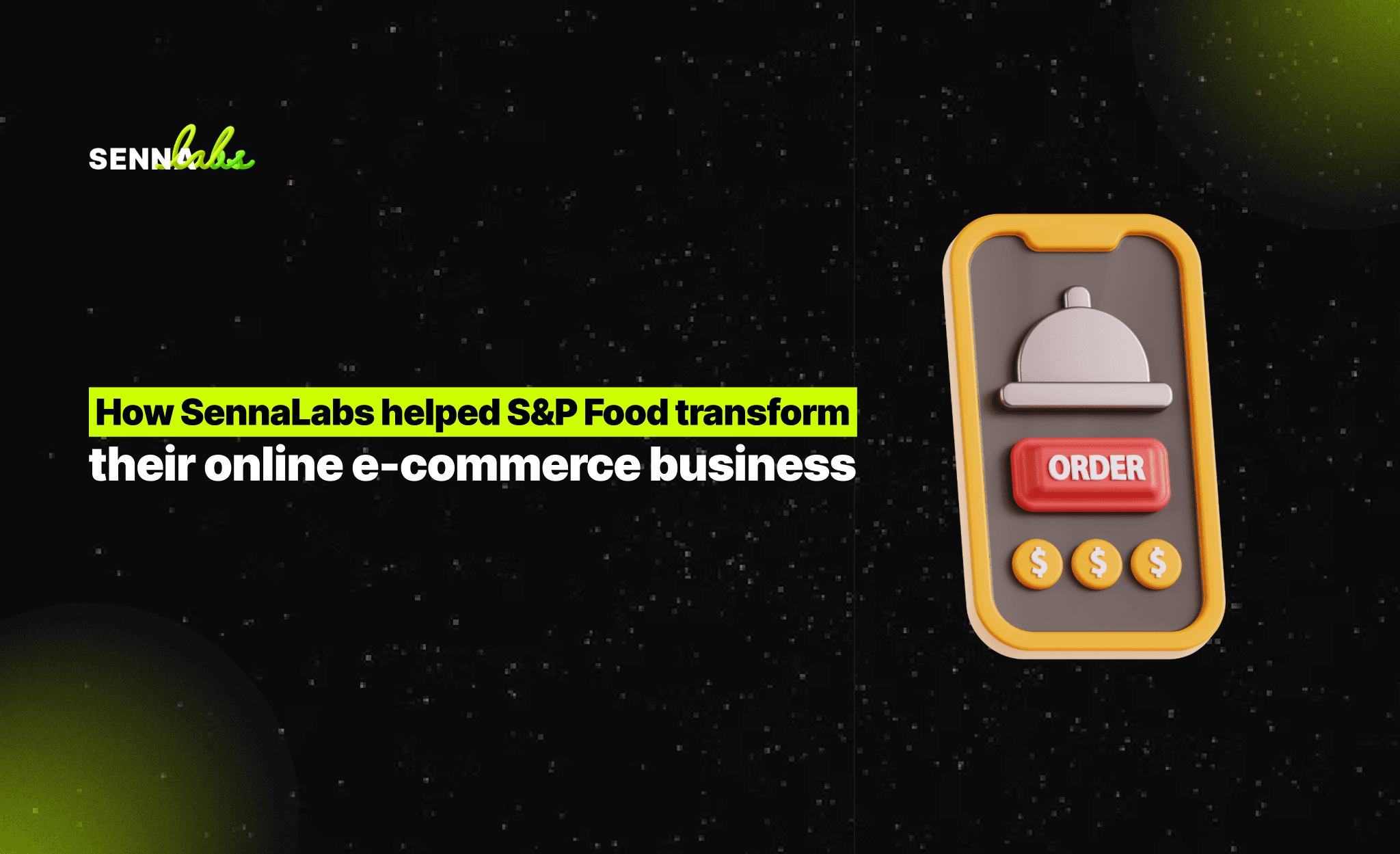How to Scale Your Business with a Custom Web Application
Share

As businesses grow, so do their operational challenges. Managing an increasing number of customers, handling larger volumes of data, and ensuring smooth operations across all departments can become complex. This is where custom web applications come into play. Custom web applications offer businesses the flexibility, efficiency, and scalability needed to handle growth while ensuring seamless operations.
Unlike off-the-shelf software, which may not meet all your business needs or adapt as your company evolves, a custom web app is designed specifically for your organization. It can scale alongside your business, streamlining workflows, optimizing performance, and improving operational efficiency.

In this article, we will explore how businesses can leverage custom web applications to scale effectively. We will cover topics such as performance optimization, cloud integration, and database management, all essential components for building a scalable and efficient system. We will also highlight a real-world use case of a logistics company that developed a custom web app to manage real-time shipment tracking and inventory updates, resulting in a 40% improvement in operational efficiency and a 25% reduction in delivery errors.
Why Scalability Matters in Business Growth
Scalability is the ability of a system, application, or business to grow and manage increased demand without compromising performance or functionality. As your business grows, it needs to handle larger volumes of transactions, customers, and data while maintaining the same level of service and efficiency.
For many businesses, growth can lead to a bottleneck if their existing systems aren’t scalable. This could result in slower response times, increased errors, inefficiencies in workflows, and ultimately, dissatisfied customers. To prevent these issues, businesses must ensure that their technology infrastructure—particularly their web applications—can scale with their operations.
Custom web applications provide the perfect solution for businesses that want to:
-
Automate and streamline operations: Custom web apps can be designed to manage specific business processes, reducing manual work and improving efficiency.
-
Optimize performance: With a focus on performance optimization, custom apps can handle high traffic and large data volumes without slowing down.
-
Scale seamlessly: Built with scalability in mind, custom web apps can be expanded or modified as your business grows without needing to replace the entire system.
The Key Components of a Scalable Custom Web Application
1. Performance Optimization
One of the most critical aspects of scaling a business through custom web applications is ensuring that the app performs efficiently, even as demand increases. Performance optimization involves designing the application to be fast, responsive, and able to handle high volumes of data and traffic.
Key Techniques for Performance Optimization:
-
Efficient Code: Custom web applications are designed with optimized code that minimizes loading times and maximizes efficiency. Poorly written code can lead to slow performance, so building the app with performance in mind from the start is crucial.
-
Load Balancing: Distributing incoming requests across multiple servers helps to prevent any single server from being overwhelmed, ensuring smooth performance during high-traffic periods.
-
Caching: Implementing caching techniques, such as storing frequently accessed data in memory, can significantly reduce load times by minimizing the need to retrieve data from the database each time a user requests it.
Example: An e-commerce business that experiences significant traffic spikes during holiday sales could benefit from performance optimization. By optimizing their web application with caching and load balancing, they can ensure that their platform remains responsive even during periods of peak traffic, preventing slow load times or outages that might deter customers.
2. Cloud Integration
As businesses scale, the amount of data they handle grows exponentially. Managing this data efficiently and ensuring that the infrastructure can handle increased demand is critical. Cloud integration is one of the most effective ways to ensure scalability for custom web applications.
Benefits of Cloud Integration:
-
Scalability: Cloud infrastructure allows businesses to scale their computing power, storage, and resources up or down based on current needs. This flexibility ensures that the web app can handle sudden increases in traffic without crashing or slowing down.
-
Cost Efficiency: Cloud services operate on a pay-as-you-go model, which means businesses only pay for the resources they use. This helps manage costs as the business scales.
-
Improved Reliability: Cloud platforms often provide built-in redundancy, ensuring high availability and reducing the risk of downtime.
Example: A retail company experiencing rapid growth integrated its custom web application with a cloud platform. This allowed them to easily scale their infrastructure during peak shopping seasons without the need for costly, on-premise server expansions. The result was a reliable, high-performing platform that could handle increased traffic without interruptions.
3. Database Management
As a business grows, the data it generates and stores becomes more complex and voluminous. Proper database management is essential to ensure that data retrieval is fast, accurate, and efficient. Poorly managed databases can lead to slow queries, long load times, and ultimately, a frustrating user experience.
Key Database Management Strategies:
-
Database Optimization: Optimizing database queries ensures that data is retrieved quickly, even when dealing with large volumes of information. This may involve creating efficient database indexes, minimizing redundant data, and writing efficient queries.
-
Scaling Databases: As the business grows, it may be necessary to scale the database to handle larger data sets. This can involve horizontal scaling (adding more servers to handle data) or vertical scaling (upgrading the existing server’s hardware to increase capacity).
-
Database Partitioning: Dividing a large database into smaller, more manageable segments, or partitions, can significantly improve performance. Partitioning allows the database to handle queries more efficiently by reducing the amount of data that needs to be searched or processed at any given time.
Example: A logistics company with a custom web app needed to handle real-time updates to its shipment tracking and inventory systems. By optimizing their database and implementing horizontal scaling, the company was able to manage the influx of data from multiple sources without affecting system performance. This resulted in more efficient data processing and improved decision-making for inventory and shipment management.
Real-World Use Case: Scaling Operations with a Custom Web Application in Logistics
To highlight the practical benefits of custom web application development for scalability, let’s take a closer look at a logistics company that successfully leveraged a custom web app to improve its operations.
The Challenge:
The company was experiencing rapid growth, but its existing systems for managing shipment tracking and inventory updates were unable to keep up with the increased demand. The system relied heavily on manual updates and was prone to errors, resulting in delivery delays and inefficiencies in the supply chain.
The company needed a solution that could:
-
Provide real-time visibility into shipment locations and inventory levels.
-
Handle a high volume of transactions and data without compromising performance.
-
Integrate with existing systems and third-party services for seamless operations.
The Solution: A Custom Web Application for Real-Time Tracking and Inventory Management
The logistics company developed a custom web application specifically designed to address these challenges. The web app included the following features:
-
Real-Time Shipment Tracking: Using GPS integration, the app allowed managers and customers to track the exact location of shipments in real-time, reducing uncertainties around delivery times.
-
Automated Inventory Updates: The app integrated with the company’s inventory management system to provide automatic updates on stock levels as shipments were processed, eliminating manual data entry.
-
Cloud Integration: The web app was hosted on a scalable cloud platform, which allowed the company to manage the increasing volume of shipments and data without performance bottlenecks.
-
Database Optimization: The app utilized an optimized database system that processed shipment and inventory data efficiently, ensuring fast retrieval of information even during peak hours.
The Results:
The custom web application provided the company with a scalable solution that could handle their growing operations. Key results included:
-
40% improvement in operational efficiency: The automation of real-time shipment tracking and inventory updates eliminated manual errors, streamlined processes, and reduced the time spent managing shipments.
-
25% reduction in delivery errors: Real-time tracking enabled the company to monitor shipments closely, allowing for faster resolution of any potential issues and improving the overall accuracy of deliveries.
-
Enhanced customer satisfaction: With the ability to provide customers with real-time updates on their shipments, the company was able to improve transparency and build stronger relationships with its clients.
Conclusion
Scaling a business effectively requires the right tools, and custom web applications are one of the most powerful solutions available. By focusing on performance optimization, cloud integration, and proper database management, businesses can ensure that their web applications grow alongside their operations without sacrificing performance or customer satisfaction.
As demonstrated by the logistics company’s success, investing in a custom web application can lead to significant improvements in operational efficiency, reduced errors, and increased customer trust. Whether you’re managing shipments, processing large volumes of data, or handling complex transactions, custom web applications provide the scalability and flexibility needed to support business growth.
For businesses seeking to streamline their operations and scale efficiently, a custom web application is not just a luxury—it’s a strategic investment that drives long-term success.

Share

Keep me postedto follow product news, latest in technology, solutions, and updates
Related articles
Explore all


